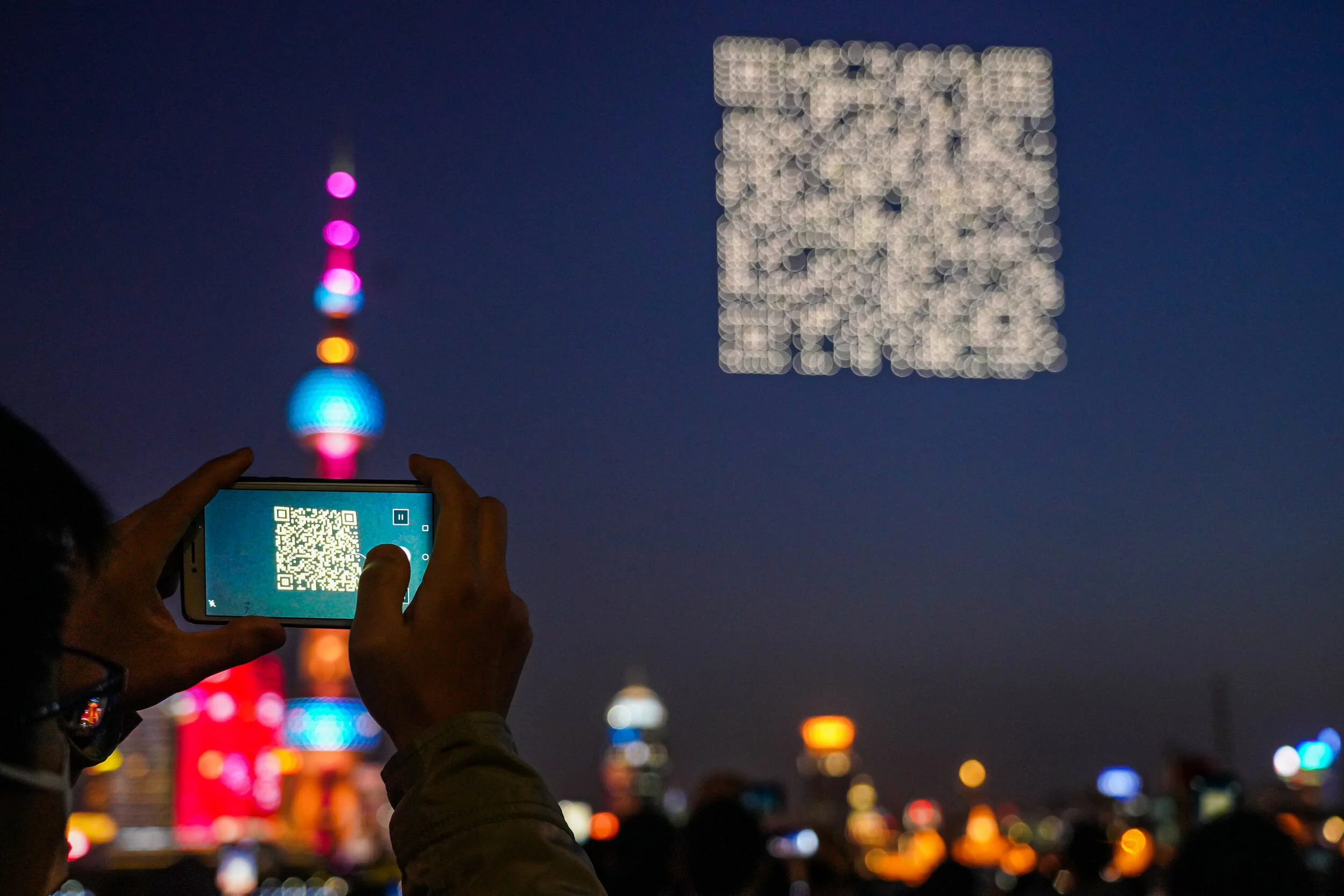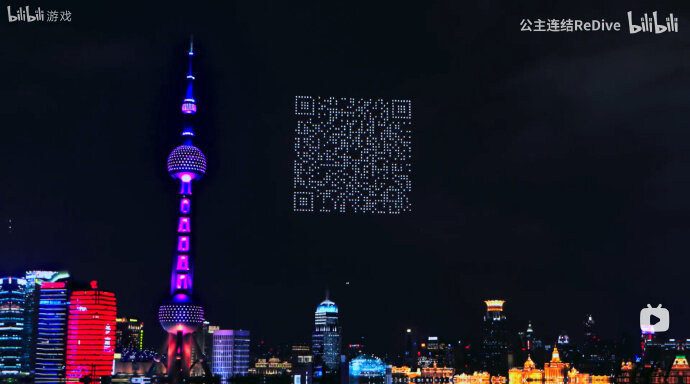Source: https://supchina.com/2021/04/23/the-future-of-advertising-is-here-and-its-a-giant-qr-code-formed-by-drones-flying-over-shanghai/
The global Covid-19 pandemic is still causing terrible problems in many countries around the world while at the same time others are beginning to emerge carefully from different forms of lockdown and are slowly re-opening shops, bars, and even borders.
Many of the precautions in place during lockdown will remain a feature of everyday life. Shoppers wearing masks in shops, for example, will most likely still be commonplace even when no longer mandated. And the trend towards contactless payments will continue to accelerate, driven by the aversion to handling cash or machinery that will continue to exist for many as well.
We’ve written before about the potential for QR codes to play a key role in the recovery from the pandemic and in the reality of the everyday new normal. Pubs and restaurants are using QR codes to download menus and prevent multiple handling of menu cards, and payment systems using QR codes can go well past the limit for standard card-based contactless systems.
QR codes can also have a role to play authorising other payments, transactions or identity confirmations online – potentially even easing SMS-based authorisations into the background. QR codes don’t carry the security concerns and expense associated with text messages. SMS codes carry a cost for the provider to send them and are also susceptible to hijacking and diverting by fraudsters.
And the rise of omnichannel marketing – where every screen, page, window-display or poster can be a trigger for a smartphone interaction or purchase - brings QR codes right into the spotlight. And speaking of spotlights, recent events in China have shown you don’t even need a screen for a live QR code to trigger mass interactions.
Games company Cygames marked the anniversary of its Princess Connect Re-Dive game with a live event that saw some 1500 drones launched into the sky above Shanghai, at first forming images of characters acting out scenes from the game, but then combining to create a giant, live, QR code in the sky that the watching crowd could scan to download or open-up the game and play along.
For any retailer or service provider, using a QR code to trigger customer interactions can provide additional security for any payments and make for a much better, smoother and faster customer experience. Properly implemented, it also means that they are not reliant on the payment provider to bolt on security that can interfere with a smooth process. Alternatively poor execution can be a disaster, disrupting the customer experience, increasing reputational risk and undermining security.
For true end-to-end security and a smooth customer experience, it’s not simply a case of using an off-the-shelf QR code generator. That might work in one-off, static scenarios, such as to call up a menu, but if you want to incorporate true interaction and a smooth customer journey through all the stages of browsing, choosing, payment and delivery, then you need the support of a specialist platform.
The good news is, your potential customers still only need a smartphone with a camera, rather than a specialist app, to benefit from the QR code approach. And if the overall user experience is your primary concern then customised security and utility within an integrated app solution is also easy and cost-effective to implement.
To discuss the challenges facing your business, and gain a better understanding of your options and their pros and cons, you can book an initial introductory call with us here.


